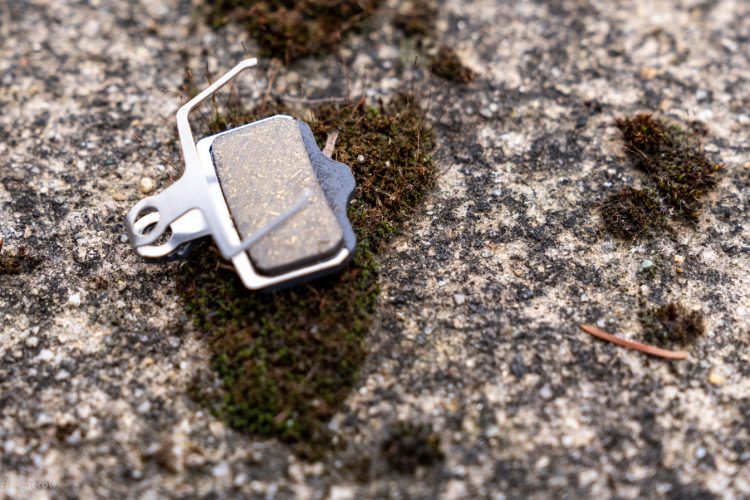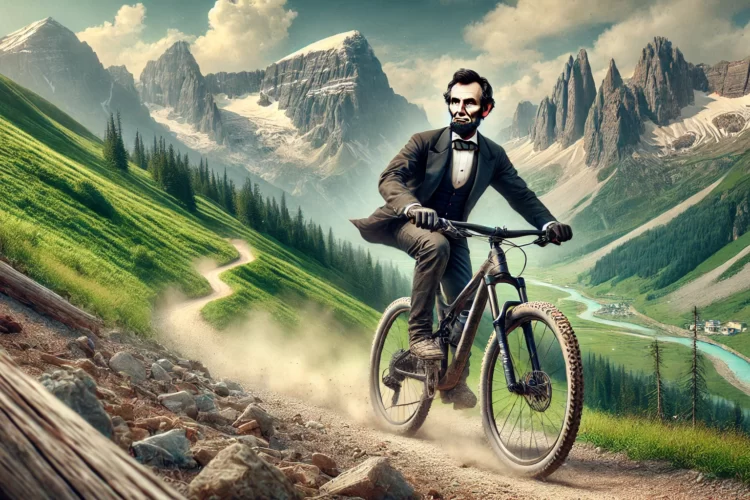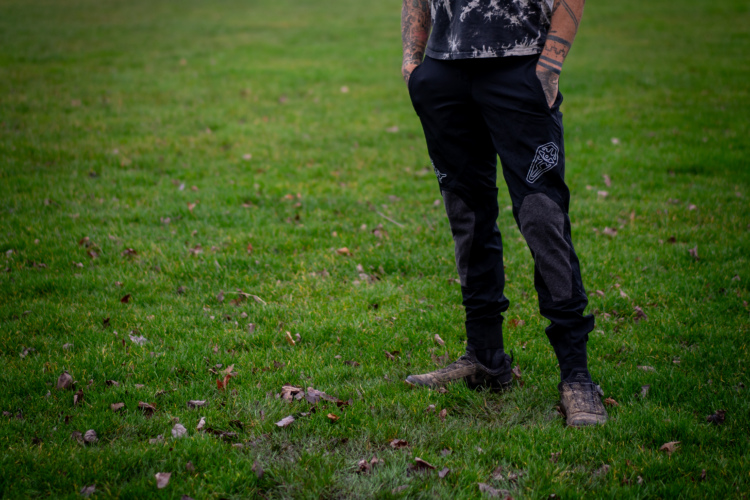If you’ve spent any time here on Singletracks or at the LBS, you’ve likely heard people talking about the “geometry” of their bike. You’ll have heard terms like slack, steep, aggressive and of course every mountain biker’s favorite: DIALED!
Let’s look at how the different dimensions of a bike frame affect trail handling, and howmountainbikes get classified into different sub-categories like XC or Downhill.
When looking at a bike geometry chart, these are the measurements that most affect how the bike handles:
- Head Tube Angle
- Seat Tube Angle
- Chainstay Length
- Wheelbase
- Travel Amount
The head tube angle is a measurement, in degrees, of the head tube – where the top of the fork passes through the frame. 90 would be straight up and down, and any number less than that represents a setup where the bottom of the fork is further away from the center of the bike than the top.
The seat tube angle, just like the head tube, is measured in degrees. The same principles apply.
The chainstay length is measured from the bottom bracket to where the rear wheel attaches.
The wheelbase is the distance between the two wheels, at the points where they contact the ground.
Travel amount is fairly self-explanatory. For a hardtail bike, travel refers to just the fork. For a full suspension bike, front and rear travel are both referenced.
“The sales guy said this bike has a nice slack geometry. Is that a good thing?”
Bikes intended for XC racing will have fairly steep head and seat tube angles (i.e. closer to90). The head tube angle on a bike like this will be in the range of 70 to 72 and the seat tube will be around 73 or more. These steep angles will place the rider over the center of the bike for powerful,efficientpedaling, and the front wheel will tend to go in a straight line while climbing. These bikes are fast andefficienton relatively non-technical trails with lots of climbing, but on really rough stuff and on downhill, the forward rider position and steeper fork angle can make an endo more likely.
XC vs All Mountain vs Downhill
A “slack” geometry means that these angles are lower, which in effect moves the rider further back in relation to the center of the bike and the front wheel is further out in front. At the extreme end of this design concept is the downhill bike. With angles in the mid 60’s, these bikes can handle super steep downhilltrail sections without the rider being pitched forward, and the front wheel strikes obstacles at an angle that allows the fork to absorb the impact and lets the wheel go up and over.As you might imagine, bikes with really slack angles tend to be terrible for riding uphill. At best the front wheel will wander and at worst the whole bike will “wheelie out” or flip over backwards.
In between these two extremes is the All Mountain or Trail bike, which attempts to be a good climber while still descendingconfidently. These are the most common bikes on the LBS showroom floor and will have a head tube angle in the 67 to 70 range and relatively short chainstays.
“What about chainstay length?”
In general, a longer chainstay will produce a bike that tracks well and wants to go in a straight line. A shorter chainstay will bring the rear wheel in closer to the center of the bike, and will make it easier to loft the front end over obstacles. Manuals and wheelies will be a cinch on a short chainstay bike, and more difficult when they are longer. Chainstay length also affects the overall wheelbase of the bike. A shorter wheelbase will allow for tighter turns, while a longer wheelbase can be more stable at high speed. Traditionally, XC bikes had longer chainstays and wheelbases while all mountain and downhill geometries were much shorter, but that trend is changing lately with XC bikes getting the shorter chainstay treatment as well.
“This bike has 9 inches of travel! More is better, right?”
Not too long ago 4″ of travel was the norm. Advances in frame design have allowed newer bikes to be set up with longer travel without the penalties of pedal bob and brake dive suffered by older models. Today’s bikes fall into three loose categories based in part on thegeometryfactors above, and also the amount of travel.
XC bikes, especially 29ers, will still have the tried and true 4″ (100mm) of travel. 120mm forks are also pretty popular in this category. Either way, these bikes are designed to go fast over race courses and may not be your best choice for shredding the gnar as a weekend warrior.
A fairly typical XC Hardtail Bike
Next we have Trail or All Mountain bikes. Some manufacturers split these out as two categories, but they are pretty similar. Bikes in this category will have from 5″ to as much as 7″ of travel. These are the “do it all” bikes and they are designed to be respectable climbers, but they are still comfortable on rough downhill. These bike will also employ design tricks like adjustable travel forks, lockout rear suspension, and height adjustable seat posts.
Freeride and Downhill bikes are meant for going fast downhill and hucking off things. Period. These bikes are heavy, and terrible for pedaling uphill. They are best suited for lift-serviced trails and shuttle runs. 8″ to 9″ of front and rear travel is the norm in this category.
a downhill bike
Hopefully this info will help you understand what you are looking at when you are out bike shopping. It’s no coincidence that most of the bikes you see at the shop fall into the All Mountain or Trail categories. These are ‘regular’ bikes for regular people to go out and ride. They can climb, they can descend, and they are comfortable for all-day XC epics. They are light enough for some casual racing, yet strong enough for some drops and stunts. Once you move out of the middle of this bell curve is when you start needing a pure XC race machine, or a hard core downhill rig. When that time comes, you’ll know.
[see_also id=”20563″][/see_also]
























16 Comments
Apr 26, 2012
Apr 23, 2012
@Element
My entry level XC bike is 30 lbs and my Haro 20 incher weighs just as much as your DH rig!
Apr 25, 2012
Apr 23, 2012
Apr 23, 2012
Maybe Syd can do a write-up on ways to make the most out your existing frame's geometry using an angleset, swapping out the fork for one with a different rake, etc.
Apr 26, 2012
Apr 23, 2012
@trek7k, my first two geometry lookups are always head angle and chainstay. Out hear in CO, a somewhat more slack head angle allows for confident descending over rough trails, while short chainstays allow the front end to be lofted over the endless water bars while climbing. That being said though, my new Anthem X 29er with a 71° head angle and rather long 18.2" chainstays handles both of those issues just fine.
Nov 3, 2012
Nov 3, 2012
too tall fork
Do NOT put a 130MM fork on this bike!
100mm is as tall as you'll want to go.
Nov 4, 2012
Feb 24, 2014
Apr 23, 2012
One cool feature that some don't think of using is adjusting the stanchion heights. Typically you can adjust them almost 20mm allowing you to raise or lower the front end (and BB)..This change also moves a riders mass slightly forward or rear.
Apr 23, 2012
Now Freeride style bikes at 7" inches of travel are a bit heavier but are designed to take more of a pounding on a daily basis. They come in around 38lbs or more.
Nice article.
Apr 24, 2012
Feb 21, 2013
Feb 24, 2014